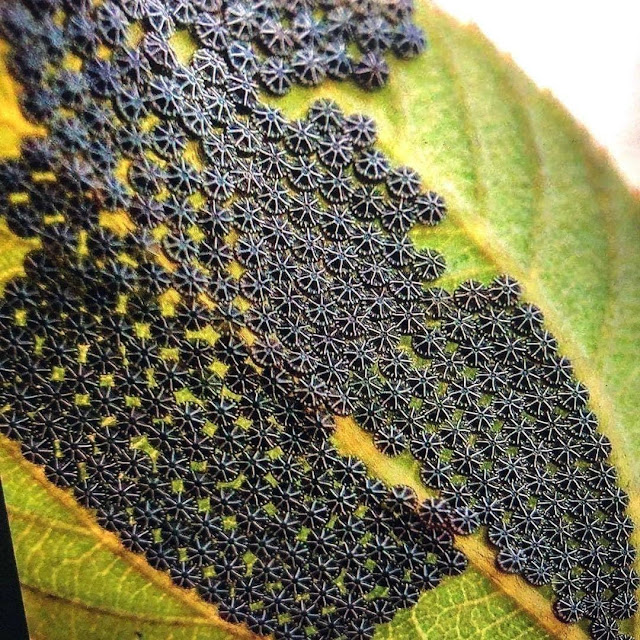ADVERTISEMENT

ADVERTISEMENT
Don’t Touch These If You See Them on Your Plants
Give me a moment to introduce you to the Mourning Cloak butterfly if you’ve never heard of this fascinating species before. It is an extraordinary natural wonder due to its unusual life cycle and fascinating traits.
The enthralling eggs are a good place to begin. The images I saw made them seem like a thin coating of black lace embellishing the leaves. They have an air of sophistication about them that is startling at first glance. Clusters of these eggs are evidence of the perfect geometry in nature.
I felt a combination of amazement and dread at first, as do many gardeners. “Will these have positive or negative effects?” I pondered. The good news is that…
Suspect or ally? Why Mourning Cloak Butterflies Are Beneficial
Although Nymphalis Antiopa caterpillars love eating leaves, they really prefer trees and shrubs that most gardeners wouldn’t mind if they ate, such as willows, elms, and poplars. So, you may relax if your garden is overflowing with blooms and veggies. The fact that these butterflies feed on rotting fruit is also a plus, as it speeds up the decomposition process.
In its entirety, this butterfly’s transformation is breathtaking. Caterpillars emerge from their eggs as spiky black creatures with little white spots. In order to get larger, they go through a series of phases termed “instars,” during which they lose their skin.
The adult caterpillars of these species locate a safe place to pupate, creating a chrysalis that looks like a little sleeping bag. This phase may be rather long, lasting weeks or months at the most, depending on the weather and other factors. At long last, they transform into the breathtaking Mourning Cloak butterfly, an elegant butterfly with velvety black wings and a border of brilliant yellow and enthralling blue dots.
Exploring Hibernation and Its Significance
The Mourning Cloak butterfly’s hibernating habit in the winter is one of its most interesting features. When it becomes chilly outside, these butterflies don’t do what others do—they hide behind sheds, loose bark, or even woodpiles. When spring arrives, these butterflies are usually among the first to emerge, often even before the flowers begin to open. Their black wings make them like a mourning cloak, which gives them the evocative name “Mourning Cloaks.” They arrive early in the spring, adding to the starkness of the environment.
Recreating a Harmonious Garden Ecosystem
When we gardeners think of insects, we usually see the damage they do to our plants right away. Worried that they would eat everything in their path, the sight of caterpillars may be terrifying. But you have stand back and see the forest for the trees.
The Nymphalis Antiopa butterfly exemplifies the delicate equilibrium found in nature. The caterpillars may eat a few leaves, but they won’t ruin your garden. Actually, you’re helping to maintain a balanced ecology by creating a home for these butterflies.
Consequently, what is your course of action?
I would recommend not disturbing these insects if you find their eggs or caterpillars in your yard. Embrace the journey and see the change for yourself! Carefully moving the caterpillars to a neighboring tree or shrub can make them happier and less likely to munch on your valuable plants, which is great news if you value your valued flowers.
Finding Harmony and Exploration in Gardening
When you garden, it’s important to strike a balance between the flora you love and the animals who inhabit your yard. Rather of rushing to spray your garden with pesticide the instant you see anything out of the ordinary, wait and see what it is. Maybe you’ll find anything as extraordinary as the Nymphalis Antiopa butterfly eggs that I found.
Keep in mind that the whole garden is an intricate stage for the fantastic journey. What makes gardening so rewarding and educational are the opportunities and obstacles presented by the changing seasons.
ADVERTISEMENT
ADVERTISEMENT
